UP TO THE MINUTE
Building for Tomorrow - PODCAST TRANSCRIPTION
August 20, 2023 at 5:00 p.m.Editor's note: The following is the transcript of a live interview with Geoff Bernstein from Vicwest. You can read the interview below, listen to the podcast or watch the webinar.
Heidi J. Ellsworth: My name is Heidi Ellsworth. And again, thank you for joining this month's Metal Talk from Metal Coffee Shop. We are here with a very fun and knowledgeable expert from the metal siding and roofing industry, and that is Geoff Bernstein. Geoff, so excited to have you on the show today. We are really going to be talking about metal siding, which is on such a growth streak. So why don't you introduce yourself to everyone and let them know who you are?
Geoff Bernstein: Sure. Hey, that's me. I'm Geoff Bernstein. I'm director of marketing at Vicwest. I've been with the business for just over four years now, and lead all of our marketing initiatives as well as our product development piece. So really, I mean the joy for me in the business is developing products, bringing them to market, and then seeing them on buildings out in the world. So that's kind of what drives me.
And this is yet another one of those products. So I'm going to talk to you today about a couple different components of metal siding that we've got. Some new, some brand new, some that we've had that we're continuously improving and really excited to bring those to you. Also, a little bit about Vicwest. Vicwest is a 90 plus year old roll former here in Canada. We're the largest roll former up in the Canadian market, and we're the only ones who have a coast to coast business. And we service the agricultural, commercial, and residential business throughout North America. Our siding products do have reach across the continent, and I guess we'll tell you a little bit more about those as we get through the webinar.
Heidi J. Ellsworth: Excellent. Excellent. Well, I do want to remind everybody that the chat is open, so please tell us. I already see Kyle on there. Hello Kyle. So glad you're here today. So please let us know who you are, where you're from, what kind of metal that you're doing. Let us know if you're doing metal siding now or you're just looking to get into it. We would love to see your chats in there. Plus any questions or comments throughout, we will be taking those throughout this presentation. So I'll be watching the chat, and we'll ask Geoff some fun questions as we go along.
I do want to remind everybody that this is being recorded. It'll be available in 24 hours on demand on Metal Coffee Shop. So please be sure to share this out with your company, with your friends, your family. This is the kind of stuff that helps grow business. So let's get started. So where we want to start, Geoff, today is just let's talk big picture, and let's start with the overall benefits of metal siding compared to other types of siding.
Geoff Bernstein: Sure. I mean, metal siding does provide an array of benefits compared to the assortment of competitors, whether that's vinyl, fiber cement, extruded aluminum, natural wood. Not that I believe, I mean metal really does compete across the board with every single one of them. We can go down the list here. But durability, our panels have a 40 year warranty, really will last essentially the lifetime of your building. The warranty that's provided, not only by the Vicwest, but in partnership with Sherwin-Williams, really is there to stand the test of time. So you can rest assured that the product that you're buying today is going to last almost as long as that building you needed for.
In terms of aesthetics, we've come a tremendously long way from just solid color metal exposed fastener profiles. The plank that you're seeing right here is part of our Bellara siding line. It's really an architectural profile with a nice C channel that's built into it. The plank itself, we actually got some new sizes coming out, so we have a 90 millimeter, a 135 millimeter, and a 200 millimeter, which we'll get into a little bit later. So really some interesting design components.
When we talk about maintenance, certainly compared to products like wood and fiber cement, which require repainting over and over and over again. I mean, those are just not in the equation when it comes to metal. When it comes to sustainability, steel is 100% recyclable. Pretty much every ton of steel that we've got has about 35% recycled content. We're working on growing that ratio. We're partnering with our steel mills to try to get to even lower embodied carbon steel products. We'll get into some of the things that Vicwest is doing in terms of sustainability a little bit later on. But certainly compared to fiber cement product and vinyl, steel is definitely higher on the sustainability chart than those competing materials.
And I mentioned the warranty before. We've got a 40 year paint finish warranty that's going to cover cracking and peeling and color fading. So really you've got a product here that's going to stand the test of time. And I think that's really the value proposition that we're trying to get across here with Bellara and with our metal siding product, that it's ideally the last siding product you're going to need for your project, and look beautiful, as good as it does day one as it will in year 40.
Heidi J. Ellsworth: Well, and I'm seeing there's a lot of contractors on here, and we actually have some chatting going on. But I mean these are the type of benefits that they really want to be talking about to homeowners because that is, I mean, homeowners, what we hear all the time, and we've seen the growth in metal roofing and we see the growth in metal siding, but homeowners are looking for these things. They're looking for something that's going to perform, and that's going to be easy maintenance or low maintenance.
Geoff Bernstein: Right. And it's not just a residential play either. We do a tremendous amount of light commercial and commercial buildings. So think multifamily residential complexes, low-rise office complexes, condo buildings. I mean the applications for this product really are limitless. So there's really no project where it's not well suited to. And with the products that we've got in the market and that we're bringing to market, allow for tremendous design flexibility. So we're seeing architects really have their interests piqued by the designs and by the look of the product. It's ultramodern and it's also incredibly versatile.
Heidi J. Ellsworth: Yeah. It really is. And speaking of the design community, I mean we are seeing architects, like you said, are very interested. What are some of the other trends or interests that you're seeing from the design community around this metal siding?
Geoff Bernstein: So for us, I'd say where we really hang our hat on, and this is partly to do with our engagement with Sherwin-Williams, and their trend team, but really around wood look. You think of wood look siding, and the technology that exists right now that we're able to print really hyper realistic wood grain graphics onto the steel. That if you're standing an inch away from it, you think you're going to get a splinter. That's how realistic the grain and the pattern is that we're able to now coat the coils in. So that realism really helps go a long way when you're trying to convince an architect or an interior designer or a homeowner who's so design focused. They really want their project to pop. So by being able to provide them really with these design forward products, that's allowing them to get converted over to metal.
And I don't really want to get into some of the competing materials, but if you look at fiber cement, great, solid color, you get a little bit of embossed into it. Vinyl, nobody really wants to get vinyl anyways anymore. I think the market's just moving away from that. And when you're looking at a product like this, yeah, it installs vertically, it can install horizontally. We've had projects that people do it on a 45. So really, really versatile, like I said before.
The system is designed as, well, as a system. So we have a full trim package that helps with transitions and starters and around windows, all made from the same coil, so you don't have any brakes in the color. And it just looks like a seamless, beautiful project. I mean, that's kind of the thing. In terms of our wood grains, right now, we've got 11 different wood grain looks. We're constantly developing more of them. And really that's where we see the future of this market in trying to emulate kind of that biophilic effect that we see with wood in the market. And who doesn't love the warmth of wood, but doesn't want to deal with the maintenance and the headaches that inevitably are going to come down the road. As beautiful as it's going to look when that home is finished, one season, two seasons into it, all of a sudden, what have I done? What did we get ourselves into here?
Heidi J. Ellsworth: Yeah, I mean Chris Morris just said in the chat that he's seen it and it's just beautiful, and I think that's what the architects are seeing too. I mean, I love that a lot of the pictures that we have showing as we're going through this presentation show you that clean architectural line. The patterns, the colors. But also I know we're going to talk in a minute just about durability, and you mentioned sustainability. I know the design community architects are looking for that. Is it recyclable? Maybe talk just a little bit about that.
Geoff Bernstein: Sure. I mean, steel is inherently 100% recyclable, right? At the end of its life, unlike fiber cement or unlike some other products which are going into landfill, this is 100% can go straight to be recycled into new steel. I mean, a key component of new steel is recycled steel. So there is that circularity that exists within the steel industry. But because the lifespan of the product is so long, 40 plus years, you don't even take that into consideration necessarily when you're putting up the building. So it's great to know that when the end of life of that building happens in a generation, yes, of course it's going to be great for all that material to be recycled, but in the moment it's just a beautiful product that's going to be better for the environment.
Heidi J. Ellsworth: Yeah. Well, and as we're talking about durability, with everything that's going on right now, I have smoke outside my window from wildfires, we have hurricanes brewing in the Atlantic, and there's a lot going on. And Kyle just asked a question about Florida approvals. So let's talk a little bit about durability, the weather, hurricanes, and if you could also answer any questions on approvals for Florida.
Geoff Bernstein: Sure. Yeah. So right now we've got Florida building code and Miami-Dade pending for Bellara. Bellara has been around for us for about three and a half years. It's largely been a Canadian play for us. We're starting to see demand south of the border. We're expanding our operation and our business strategy to move into the southeast of the US. Obviously Florida is a huge potential market for both roofing and siding. So we'll have Florida building code wrapped up likely in the spring. Miami-Dade itself, I mean the county is a little more fickle, let's say, on when they decide to bring out the rubber stamp. But in terms of the performance testing, I mean the wind test, the water testing, the impact testing, fire testing, it's all there.
I just had a question about coil. All of our coil is 100% Canadian. So really it's a full North American product. There is no offshore coil. The steel comes from the ArcelorMittal Mill here in Hamilton, Ontario. The paint is Sherwin, so nice local American business. And this particular product, all of our siding profiles are roll formed in our facility just outside of Montreal in Quebec. So that gives us excellent reach into the US market. I mean, we're only a 40 minute drive from the US border. So some contractors, "Oh, you're Canadian." Don't worry about it. Don't worry about it.
Heidi J. Ellsworth: We don't have problems with Canadians. You don't have to worry about that.
Geoff Bernstein: We're too friendly. Maybe we need to stand up for ourselves a little more.
Heidi J. Ellsworth: Friendly and funny. So talk a little bit too about, we have down here insects, fire, mold, we just got salt water limitations. Talk a little bit about that.
Geoff Bernstein: Sure. Well, I mean insects and mold, I mean the product just simply is those are non-issues. The steel is just not impervious to those issues. Fire, we do have fire testing for the product. I mean, the steel is inherently non-combustible. What really needs to happen is the contractor needs to focus on what the built up assembly behind the steel is. So if they're putting that on strapping, or is that going on a cinder block wall with wood strapping, or is it going as a rain screen or is it going direct to plywood? Those are elements that are going to come out based on fire code. But certainly the steel itself does not combust, does not promote combustibility, no fire.
Heidi J. Ellsworth: Yeah. And-
Geoff Bernstein: And I-
Heidi J. Ellsworth: Go ahead.
Geoff Bernstein: I'm sorry. I just saw a questionnaire in the chat around coastal environments or salt environments. So it is a galvanized steel product coated with either PVDF or SMP paint. Frankly, the warranty is pretty clear that the limit from a saltwater environment is 1,500 feet. We do like to keep to that limit. In certain cases, if there's going to be major commercial projects, Sherwin does offer a coastal paint. So there is potential for doing some custom colors in that option, but those are going to have to be some pretty large scale projects for us to try to get into.
Heidi J. Ellsworth: Yeah. And with all the questions, we are talking about standards, so when you're looking at the AAMA, which is the, I'm going to say this, American Architectural Manufacturers Association standards, you meet all of these. So why don't you talk a little bit about that?
Geoff Bernstein: Sure. I mean, the color retention, the product is designed to simply not fade for 40 years. Sherwin has tested these paints and this system ad nauseum for decades in the lab at the test fence in Fort Myers and in real life application. And the performance of the paint to not fade, and also it's in a siding application, it actually has less UV exposure. So we're actually already a little bit ahead of there. So a little positive from roof versus siding.
But it's a best in class warranty. I mean, you're certainly looking at competing materials, extruder, aluminum all the way down, you're not going to find a warranty and a color fade technology that's going to beat what we've got with the collaboration with Sherwin. And that ties into the chalk resistance and the peeling and cracking, I mean the adhesion to the steel, it's second to none. I mean, the technology is well established, it's there. We're not reinventing anything when it comes to coil coatings here, but the way that we're bringing it to market is definitely a little unique.
When it comes to, I'd say salt spray and saltwater environments are two different things. There is a salt spray test that is done as part of the battery of tests for Florida building code. Don't confound that with 1,500 feet away from a coastline, please. They're two different things. But part of the evolution of the paint, and certainly with PVDF, is that it is very resistant to corrosion and to salt. And if you do get a scratch on the product, we always have a touch-up pen. You don't want the bare steel exposed in a salty environment.
So we talked briefly about the warranty. I think we touched on fire already. But if anyone wants to put anything in the chat, happy to re-address any of those. Let's see. A question about aluminum. I mean, we're largely a steel company. Aluminum is potential for us in the future. Of course, we realize that in Florida there's a definite aluminum market down there. I'd say today, we're steel. In the future, anything's possible.
Heidi J. Ellsworth: Yeah. Especially with everything that you're doing. It's pretty cool.
Geoff Bernstein: Because the coil coating technology is applicable to aluminum in the same way. The roll forming equipment is largely the same. Will do, Kyle. We'll keep you posted.
Heidi J. Ellsworth: Yeah. Kyle's in our club, so it's easy to find him. We know how to get of Kyle. So let's talk a little bit about Bellara , and just overall start talking about the product. And I love this picture, by the way. I just think it's beautiful.
Geoff Bernstein: Thank you. I wish I lived there. It's actually nicer if you zoom out, but anyways, I digress. So Bellara is incredibly versatile. So it can be installed in any number of applications, whether that's, like I said before, direct to plywood with a rain screen, as a facade system. So we have commercial projects where we install Bellara on top of insulated metal panels. So really however you want to create that buildup for the wall, Bellara is a perfect solution for the exterior facade. So whatever situation you're in, we'll get to that, Bryn, in a minute, but thank you. Sorry. Whatever situation, whatever wall you're working on, for sure, Bellara can provide a solution. In terms of low maintenance, I mean, it's just no paint, simple wash that really the rain takes care of. What else do you want? You just install it and that it. It's done.
Heidi J. Ellsworth: Well, and to that point on the color that Bryn is bringing up and the pattern variations in depth, that is just amazing what you're doing. I mean, just look at that. It looks just like wood, but yet with all the durability, all the performance.
Geoff Bernstein: Right. So yeah, I can go into a little bit about how we create these graphics. So the technology itself is actually quite old. I mean, it's a technology from the 1900s. I heard a Gen Z-er the other day say that's something that that's from the 1900s. I'm like [inaudible].
But what we're doing here is the process to develop the wood grain graphics is that we've actually scanned, at ultra high resolution, real wood. And based on the parameters that are in the coil coating process, we've reworked the graphic to kind of strip out some, but not all, of the characteristic of the wood, really focused on the important areas. Obviously the color is critical. So again, partnering with Sherwin to figure out what the base coat should be, what tones are going to work together, so we can create that two and three color process that's part of this.
But what you're seeing here on the wall is actually a composition of five different planks. And because of the way that the steel coil is produced, we slit that into five faces, and then those are roll formed into 12 foot planks. And then as the contractor is installing it, he creates the pattern variation really to design the wall on site so it looks as natural to what is possible. So when you see areas where you've got this natural break in the window, and you're able to have kind of this narrow strip of wood, but then on the top, you can't quite pick the patterns out. And even on a vertical plane, I think it's like the third plank in there from the, I don't know, is that the left or the right, call it the left third plank in on the right side, you can get a seam vertically.
So again, you're creating a staggered effect really to create the most natural looking installation possible. And this works in small areas just as well as it does on large projects. And I think you'll see some of those projects coming through just in terms of, hey, great as an accent wall in a residential application, beautiful. But when we're getting into architectural specification and we're talking about light commercial where the steel now all of a sudden is encompassing 80 or 90% of the building, instead of just being 150 or 200 square feet of an accent, that's where it really starts to shine.
Heidi J. Ellsworth: It's so pretty.
Geoff Bernstein: I think we'll get to some of those.
Heidi J. Ellsworth: Yeah. So let's talk a little bit about that installation and the different profiles. I love board and batten, just saying, but you have so many great ones. We're going to get a little deeper into them, but to kind of start with how it all goes together.
Geoff Bernstein: Sure. So I mean the panel that really is the workhorse within the Bellara collection is our plank. That's the first one that we brought to market, say in 2019. It was that 135 millimeter one, call it about five and a quarter inches. And that's really been the driver of this product line. And the success that we've had with it has allowed us now to reimagine what we're going to do with this product roadmap and expand the Bellara collection. So not only, bring to market now two new sizes, a smaller, call it three and a half inch, and a larger eight inch, but all of those profiles can work together on the same wall. So they share a lock mechanism.
So again, when you're talking about how do I create a wall that looks as natural as possible, well, here's a great way to do it. Why don't you mix and match the widths of the profiles so that you're always hitting a different part of the coil when you're installing it on the wall, so that the part that's hidden in the lock on the five and a quarter inch, now is all of a sudden visible on the eight inch. So you're getting a different part of the graphic now hitting a different part of the wall that otherwise wouldn't be there. So these three, working in unison together, really helping architects bring really a unique vision to a wall assembly.
And with the wood grains, I mean, not only is it look, again, the realism is just, obviously you're seeing some gray renders here, but the realism of it is amazing. We're currently, so in Q1 of 2024, we're bringing to market a board and batten look and a shiplap look, which are traditional siding products that exist within wood and fiber cement and vinyl. And we strongly believe that there's a home in that space for steel.
And really that kind of pushes the discussion forward on steel isn't just for the roof anymore, right? Steel isn't just for that accent wall anymore. Really you can now, because of the different profiles, because of the complimentary color palettes, you really can now create a home or a building, or any type of project that's 100% clad in steel, but that is not a traditional steel looking building. And that's really where we want to push that narrative. There's a solution. Whatever wall or roof assembly you're working on, there's a solution where steel can come in and solve for that in a positive way. So with that sustainability, with that longevity, with the weather resistance, with the colors, so they're on trend, so on and so on. I mean, the list is endless.
Heidi J. Ellsworth: Yeah. It goes on. Well, and speaking of colors and really bringing... And one thing I want to point out, we talked a lot about architects, but this is very doable for contractors to work with homeowners to create all these beautiful patterns, and all these different looks, and putting it together because you can find all these different types of colors. And this is the perfect time right now to bring in Bryn's question on how often do you add new colors? So maybe talk about your colors and how this comes to be.
Geoff Bernstein: Sure. So I'd say our focus originally was around solid color, thinking that that's kind of where the market is. But really, it's around wood look. I mean, it didn't take very long for us to put two and two together to realize that it's the wood look and the wood grain graphics that are the most in demand. Because not only how great they look, but really that's just where the market is. So we've got 11 wood grains today. We're currently working on a handful of new ones that we're going to launch in 2024. But like I said, it's a painstaking process for us to develop the new graphic, and then figure out what colors we're going to manufacture those in. So you see up there, I mean, it's kind of cut off, but it's okay if whoever over there at Coffee Shop doesn't know how to work PowerPoint.
Heidi J. Ellsworth: Sorry. We were just giving a little glimpse.
Geoff Bernstein: But the warm rosewood and the dark rosewood that you see up there in the top corner is actually the same graphic. All we're doing there is changing the color of the paint. And the same goes for barnboard, right? We actually have three colors within the barnboard family. And the deep walnut, mountain cedar, and natural maple that you see at the bottom. There's actually a fourth one, river rock grey, which was in one of the projects that was previously on screen. It's the same image, but painted or coated rather in different colors.
So that allows us to focus on, hey, is it going to be this heavily knotted look that we're going for? Kind of like what you'd see in a barnboard. Or is it just this smooth, elegant, linear wood grain that you see in rosewood and in the mountain cedar graphic, right? So that's where our next step is, is figuring out what the next two and three and five wood graphics that we're working on bringing to market.
And they're not all superstars. We can't be perfect all the time. So some of them get swapped out and new ones come in. But I think that's just the nature of it. And trends change. Certainly the colors that were top of the list two years ago aren't on the top today. And I'd be crazy to say that our number one color today is still going to be number one in two or three years. So it's that constant evolution of what is resonating with homeowners, where is the trend in building design?
And Bryn knows better than anybody here how global color trends trickle down across any number, multiple industries, from appliances to cars to fashion to siding. Eventually it all just kind of intertwines. And colors that you would think were crazy a couple of years ago, yeah, all of a sudden, I think I saw that at a house somewhere. Sure, I'll get that. I'll take that one. Right? So it's a constant evolution of the color palette.
Heidi J. Ellsworth: So on Roofer's Coffee Shop, about a month ago, we had an awesome RLW webinar, and Bryn was on that, so thank you for being here today, Bryn, talking about the FUSE report and what Sherwin-Williams does every year on colors. So maybe Geoff just talk, I think it'd be great for you to share with everyone how you work together to decide on new colors or to sunset older colors. How does that process work?
Geoff Bernstein: So not as efficiently as I think either Bryn or I would like. But we look at the FUSE report as well. Of course, we're focused on, hey, what color of the year with Sherwin, and how do we bring that into our mix? And part of our launch for next year, and you may say we're a little late with it, but evergreen fog coming into the mix, which was color of the year, I think not last year, but the previous year. It's kind of a really nice cool green gray color that just seems like it would be perfect in so many residential applications, and just be so well suited to the board and batten, and that shiplap color.
But our challenge is that are black and the dark colors within the solids still resonate. So I would definitely create a separation between where we are with the wood grains and what the direction is for the solid colors. We don't see as much volume in the solid colors. I think that's going to change with the board and batten and the shiplap. I think traditionally those are solid. You don't see a lot of heavy wood, natural wood necessarily with those, maybe with shiplap, but not board and batten.
So we assess market feedback. I mean, we're very fortunate to be in the Quebec market. Which frankly is, if we think of Europe as kind of year zero from a trend perspective, Quebec really follows very closely right after. And then it kind of trickles down and across into the US. There's still a very, well, not conservative, conservative isn't quite the right word, but risk averse maybe when it comes to color. Which certainly looking out the window here in rural Quebec doesn't apply, right? There's no rules here.
Heidi J. Ellsworth: I love it.
Geoff Bernstein: So being able to use our sales analysis and figuring out what's moving here, that helps. That helps us understand what's going to work within the market, and obviously leveraging the global knowledge of Sherwin's team to maybe help us take a risk and help us lead on color for once in our lives. So that we-
Heidi J. Ellsworth: I don't know. It looks like you're doing a lot right now. It's pretty nice.
Geoff Bernstein: Well, there's nothing too exciting about espresso, graphite, and ebony. Those are pretty safe bets.
Heidi J. Ellsworth: I haven't seen them around town. New construction here, we've been seeing those dark colors for sightings. So yeah, it's beautiful.
Geoff Bernstein: That's true. That's a thing.
Heidi J. Ellsworth: Well, okay, we talked about some of this, but I kind of want to talk about the Bellara performance because you talked about how it's the snap lock. So let's talk a little bit more about the system. And so we obviously have talked a lot about Sherwin-Williams, but how the steel and the system really provides that high level of performance, so homeowners, building owners don't have to worry that it's not going to last 40 years.
Geoff Bernstein: Sure. So I mean, if you recall that slide a couple of slides ago, we actually saw the CAD drawing on the lock mechanism. I mean, that is a really robust lock. We actually consume about 48% of the steel in the lock. So that original panel is 10 inches wide. And we roll form it down to about that five and a quarter. But think how much material we're building into the rigidity of the panel. And that not only creates a very solid plank, because they are 12 foot lengths, so there isn't really that flex in the panel, but also the way the lock mechanism is folded under there and the bottom engagement piece, they actually lock in together. So one contractor really could do this installation. You don't need a second guy at the other end to balance the panel and to hold it up there. You really can engage the lock as you're working your way through the wall, fasten it into the substrate, and just continue to build up your wall.
And that lock mechanism is pretty serious, and of course helps across the board when it comes to performance. So you think of wind uplift behind that assembly, I mean, it needs a lot of force to even try to do anything to that wall. It is solid. And one other thing that we build into every panel, which wasn't in that CAD, but at the end of the panel there's a little overlap. There's a little notch that's actually cut out from it. So it actually, when you're installing them and overlap, and butting the two panels up together, you don't have a gap. The notch kind of nests under the other panel so that if there's expansion contraction in the wall assembly, the panels are not going to look like they're coming apart, right? You've got some leeway there to make sure that you're not going to end up seeing through the panel. You're always going to get that full covered look.
Heidi J. Ellsworth: Excellent. Okay. One of the things we talked about from the architectural standpoint, and I know is also very top of mind for homeowners and building owners, and that's sustainability, where they want to know there are sustainable products. And I'm just realizing here, the picture I picked has actually trees in it. It's because we're saving trees with your net zero carbon, and you're saving trees by having metal siding. And it really works out well. So talk to us a little bit about the Planet Passionate program and how that fits into Bellara, and really your whole Vicwest overall.
Geoff Bernstein: Sure. So Planet Passionate is a, I don't know how much everyone on the call knows about Vicwest specifically, but Vicwest is part of the Kingspan Group. Kingspan's a global leader in building materials. And not only leads across many of the categories that we're in, we're in 80 countries, 22,000 employees. Just a pretty sizable business from a global standpoint. But with a focus on stripping carbon out of the built environment. Really that's the message.
And this is probably the most serious initiative, certainly within the building materials business when it comes to sustainability. We're backing this up with a $500 million global investment in an effort to not only strip carbon out of our manufacturing facilities, but also help our supply chain partners work within their operations to help their sustainability initiatives. And we actually have this complex scorecard for our distribution partners that they need to adhere to their own sustainability goals if they want to do business with us. So that's one thing.
But our program here at Vicwest focuses on four key pillars. So carbon, which is the one you're seeing there, energy, water, and waste. So from a carbon standpoint, our focus has largely been stripping carbon out of our manufacturing environment. So we're taking tangible steps to invest in our operation facilities to reduce our energy requirements. So things like installing day lighting across over about our million square feet of warehousing and manufacturing space across Canada. That reduces our reliance on LEDs. It reduces our alliance on fluorescence. Where we've converted all of our forklifts to electric away from propane. That not only has a positive carbon story, but it also has a positive air quality story within our facilities. If all of our plant workers aren't breathing in carbon monoxide and propane fumes all day, that's going to have probably a net benefit to them overall.
Heidi J. Ellsworth: Yeah, yeah, definitely.
Geoff Bernstein: Around energy, our goal by 2030 is to have 80% of our energy requirements running by direct renewables. So we've actually just installed about 1,200 solar panels on the roof of our facility here in Stratford. That accounts for about 90% of the energy requirements of the building, which now no longer have to get pulled from the grid. So in Ontario, where we don't have a carbon free energy grid, there is still some coal here. Even though nuclear is carbon free, we don't consider it a renewable resource. So that's on one hand, great. But on the other hand, hey, we're still taking this initiative in order to help promote that energy efficiency and that self-sufficience within our energy.
Within waste, we have a goal to have zero waste to landfill. A couple of years ago when we first started on this journey, we were sending about 160 tons of waste to landfill. And that's everything from scrap steel, there wasn't really a recycling program in place, all the way down to food scraps in the cafeteria in the workplace. And we've made some real tangible steps. Obviously now, any scrap coming off our production line is of course sent to be recycled.
We're helping reduce waste. I mean, we have a takeback program for some of our crates that go back and forth between regular customers. So we're not consistently consuming wood and the crating, and all of that that's involved with it. Even the plastics that are wrapping the products, we're looking at ways at creating more sustainable products for that component. And now we've even, I think when we did the numbers, it was two tons of food waste that we were doing. So just the table scraps, right? Just put it in a green bin, put it in the organic bin, right? Don't send it to landfill, just put it in a compost. So it's going to be easy for us to get... We've already cut it down to, I think we were at now about 70 tons to landfill at last count, so over half already figured out. But it's going to be the last bit that's going to be a bit of a challenge for us. But we'll find a way, as we do.
And then the last piece part of the program is really around water. So globally within Kingspan, water is a tremendous focus. Kingspan is a global leader in insulated metal panels. Water is one of the inputs in that product. We are a steel roll former. We don't have any input into our product except for steel and paint. Really, that's it. So where we've decided to take water and that initiative is in a different direction, where we've installed rainwater harvesting tanks at our production facilities so that the large roofs that house our operations actually drain into these massive rainwater tanks. We have one-
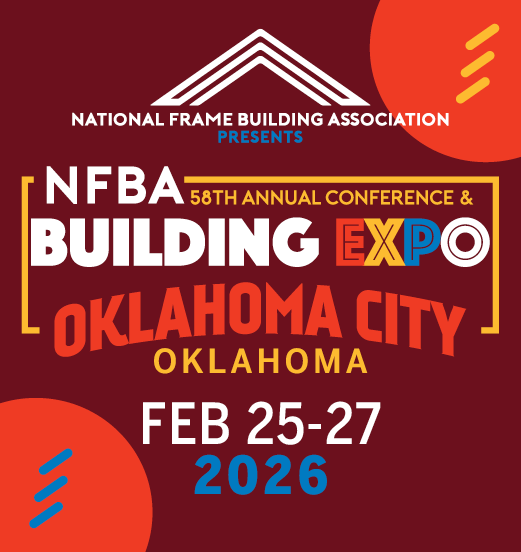

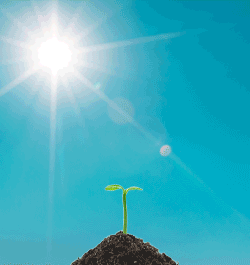









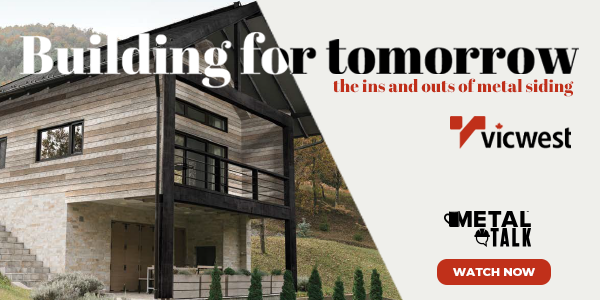
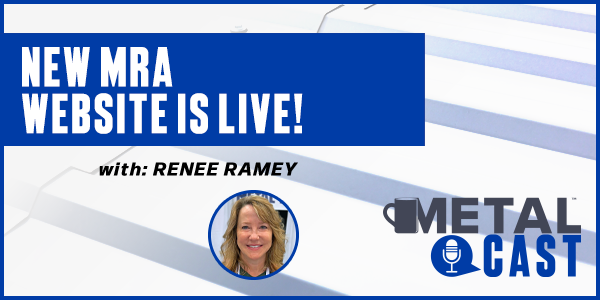
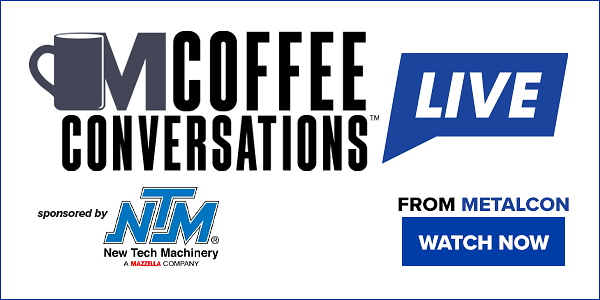
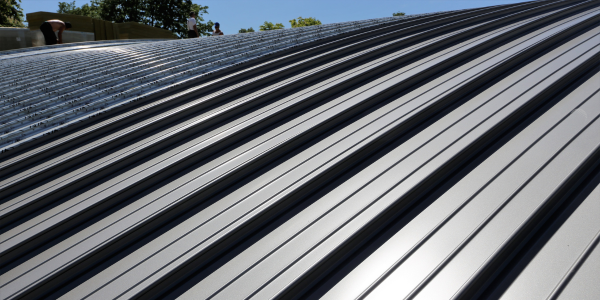

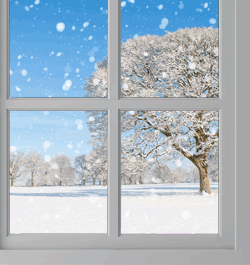



Comments
Leave a Reply
Have an account? Login to leave a comment!
Sign In